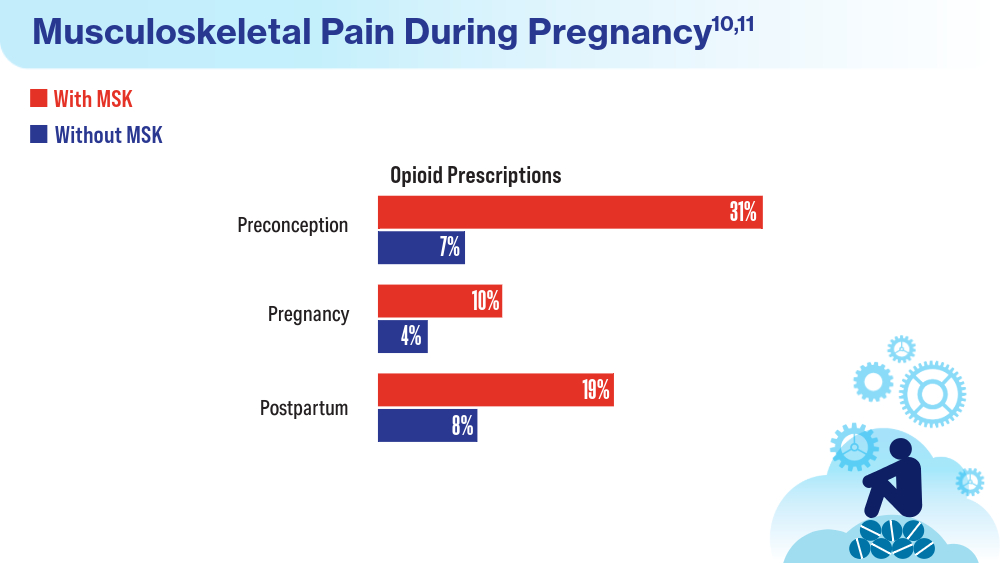Click to view more from Federal Health Care Data Trends 2024.
Data Trends 2024: Women's Health
Reviewed by:
Sarah Meadows, PhD
RAND Corporation
Santa Monica, CA
Dr. Meadows has no relevant financial relationships to disclose.

1
-

Veterans of reproductive age are at a higher risk of unwanted pregnancies due to challenges such as limited access to contraception (depending on their location), disrupted health care, and the psychological impact of military service.
-
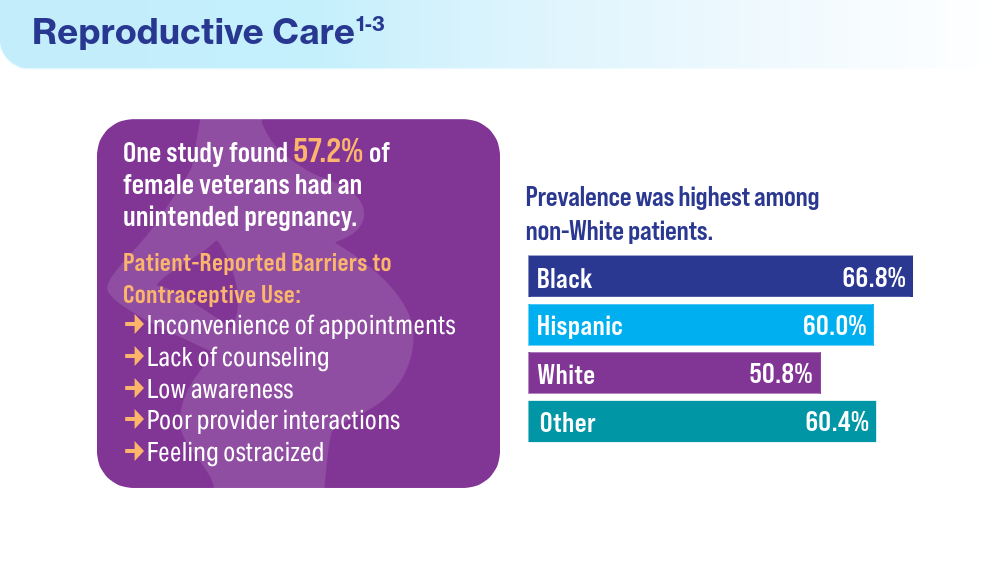
-
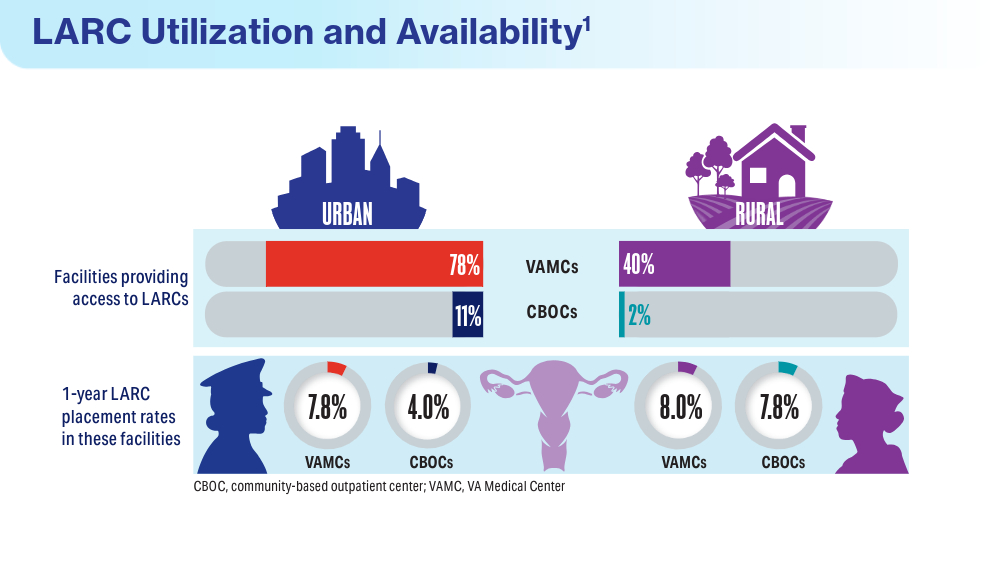
Long-acting reversible contraception (LARCs) such as intrauterine devices (IUDs) and contraceptive implants, are gaining popularity among female veterans in regions with limited outpatient care.
-
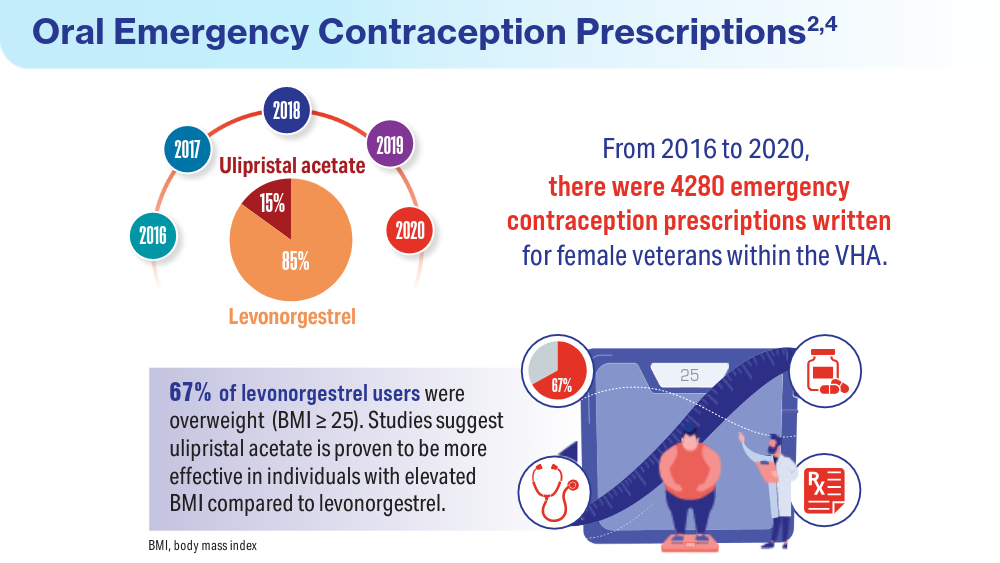
Emergency contraception prescriptions are underutilized at the VHA among the 43% of female veterans of reproductive age, with <1% choosing the options. Possible reasons include lack of awareness, clinician biases, and preference for over-the-counter medication.
-
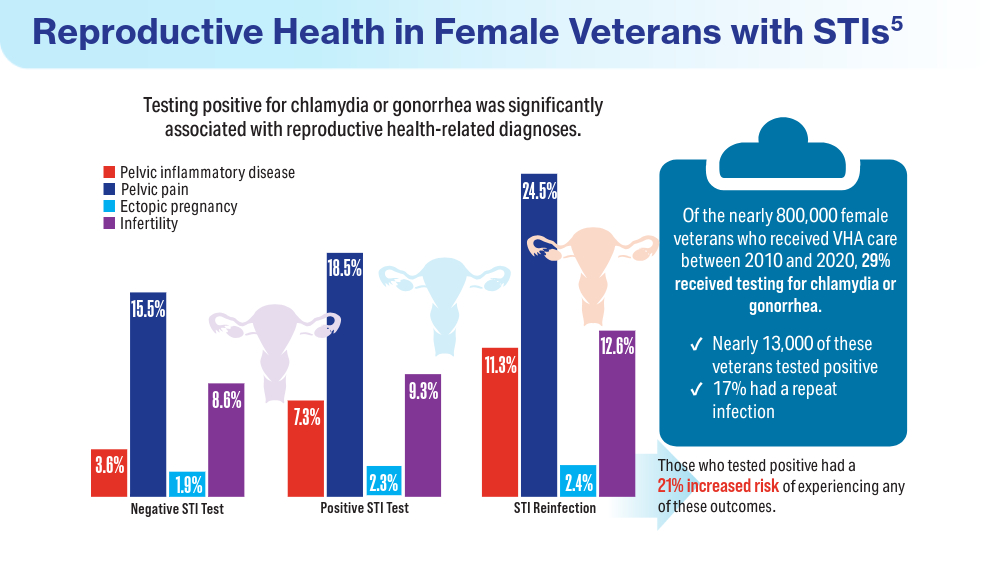
A comprehensive analysis of 232,614 female veterans who underwent screening for sexually transmitted infections (SITs) revealed a heightened risk of debilitating reproductive health conditions in those who tested positive. The risk of pelvic inflammatory disease, for example, was doubled in female veterans who tested positive.
-
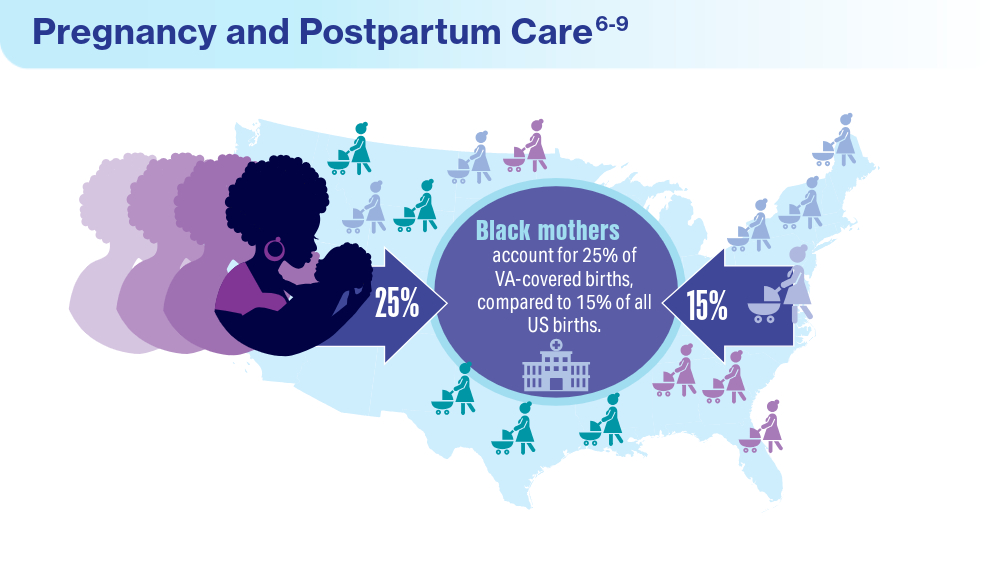
-
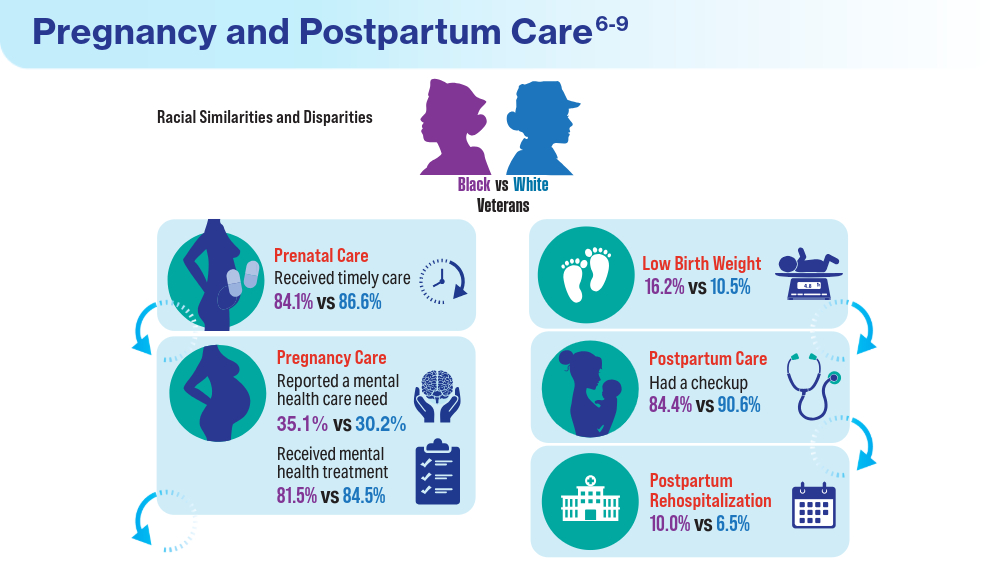
Despite similar patterns of use among Black and White veterans for pregnancy and postpartum services, disparities persisit in their outcomes.
-

26% of female veterans endure musculoskeletal pain (MSK), posing challenges during pregnancy. This study (n = 1181) comparing veterans with and without MSK who gave birth before June 2021 highlights the importance of access to pain management services during pregnancy, as pain could cause potential risks to the fetus.
-
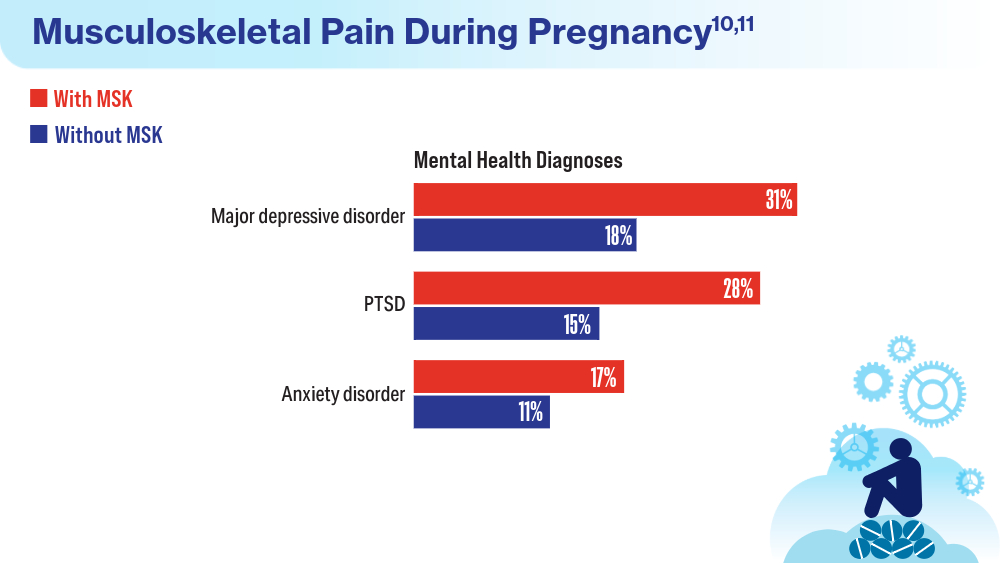
-
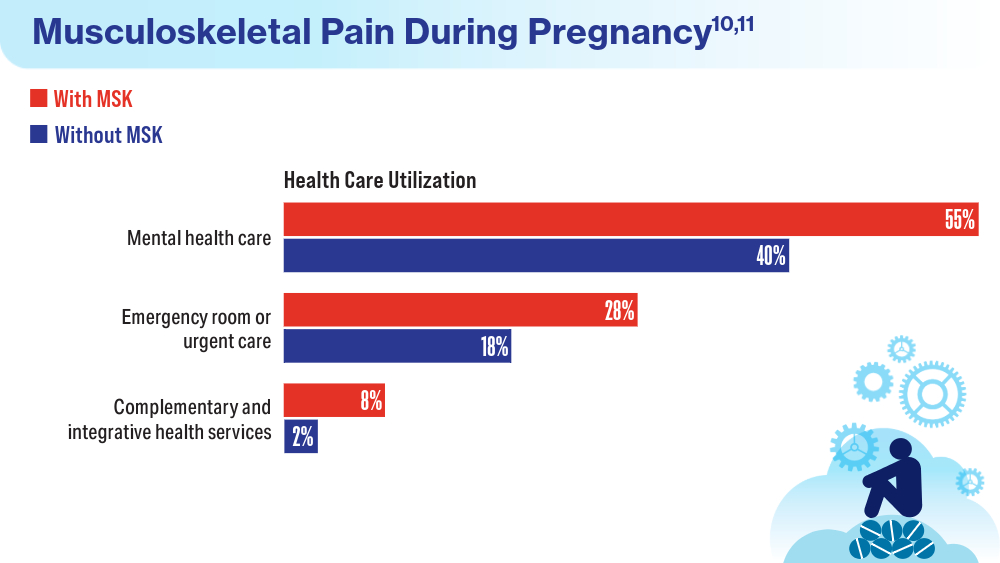
-
